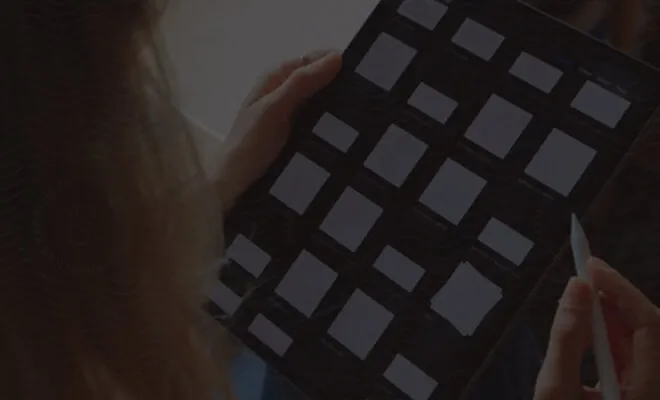DWS Processor API with Java
With Nutrient DWS Processor API, you can process your documents by making HTTP requests to one of our 50+ API tools(opens in a new tab). You can make a single request to one tool or combine API actions to generate, edit, OCR, and convert your document (1 document can have multiple API actions).
This guide explains how to use Java to make HTTP requests with our API by:
- Installing the required dependencies
- Preparing the payload
- Making the request
You’ll use OkHttp(opens in a new tab) to make HTTP requests, and you’ll use org.json(opens in a new tab) to build the instructions JSON object.
Installing the required dependencies
You’ll need a Gradle-based Java project. The easiest way is to use IntelliJ(opens in a new tab) and create one from there.

Now you can add your dependencies to the build.gradle file:
dependencies { implementation 'com.squareup.okhttp3:okhttp:4.9.2' implementation 'org.json:json:20210307'}Finally, you’ll need to add document.pdf and logo.png files to the root of your Java project. You can use the sample files provided by us — document.pdf and logo.png — or use your own.
Your project is now ready to make requests to Nutrient DWS Processor API. Next, you’ll add your main entry point to the app. Create a new PspdfkitApiExample class and add a main method. You can also add all the imports you’re going to use:
import okhttp3.*;import org.json.JSONArray;import org.json.JSONObject;
import java.io.File;import java.io.IOException;import java.nio.file.FileSystems;import java.nio.file.Files;import java.nio.file.StandardCopyOption;
public class PspdfkitApiExample {
public static void main(String[] args) throws IOException { // Implement your call to Nutrient DWS Processor API here. }}Make sure you set this class as your app’s entry point. At this point, you’ll be able to run this class directly from IntelliJ.
Next, implement your main method. For this guide, you’ll watermark a PDF. First, you need a new OkHttpClient:
final OkHttpClient client = new OkHttpClient() .newBuilder() .build();Next, you’ll prepare the payload.
Preparing the payload
For this example, you don’t need any special configuration to create your instructions JSON object:
final JSONObject instructions = new JSONObject() .put("parts", new JSONArray() .put(new JSONObject() .put("file", "document") ) ) .put("actions", new JSONArray() .put(new JSONObject() .put("type", "watermark") .put("image", "company-logo") .put("width", "50%") ) .put(new JSONObject() .put("type", "watermark") .put("text", "Property of Nutrient") .put("width", 150) .put("height", 20) .put("left", 0) .put("bottom", "100%") ) );Here, you just build a JSON object using the org.json(opens in a new tab) dependency you added earlier. For examples of how the watermark API can be used (for example, adding multiple watermarks to the document, watermarking the last page of the document, and watermark alignments), refer to our PDF watermark API page.
Next, you can create your RequestBody:
final RequestBody body = new MultipartBody.Builder() .setType(MultipartBody.FORM) .addFormDataPart( "document", "document.pdf", RequestBody.create( new File("document.pdf"), MediaType.parse("application/pdf") ) ) .addFormDataPart( "company-logo", "logo.png", RequestBody.create( new File("logo.png"), MediaType.parse("image/png") ) ) .addFormDataPart("instructions", instructions.toString()) .build();Here, you assemble your multipart/form-data body containing the JSON instructions, your document.pdf that will be watermarked, and the logo.png that you’ll use as a watermark.
Making the request
Finally, all that’s left is to actually make the request. Make sure to replace the your_api_key_here placeholder with your actual API key if it hasn’t yet been replaced:
final Request request = new Request.Builder() .url("https://api.nutrient.io/build") .method("POST", body) .addHeader("Authorization", "Bearer your_api_key_here") .build();
final Response response = client.newCall(request).execute();
if (response.isSuccessful()) { Files.copy( response.body().byteStream(), FileSystems.getDefault().getPath("result.pdf"), StandardCopyOption.REPLACE_EXISTING );} else { // Handle the error. throw new IOException(response.body().string());}This will actually send your request to Nutrient DWS Processor API and save the resulting PDF in the root folder as result.pdf.
At this point, you’ll be able to run this directly from IntelliJ and see result.pdf appear in your root folder. And that’s it — you now have everything set up to use Nutrient DWS Processor API from Java.
While this example made use of our watermarking API, this same approach can be used for all our available tools(opens in a new tab).
Complete code
For your convenience, the complete code is below:
import okhttp3.*;import org.json.JSONArray;import org.json.JSONObject;
import java.io.File;import java.io.IOException;import java.nio.file.FileSystems;import java.nio.file.Files;import java.nio.file.StandardCopyOption;
public class PspdfkitApiExample {
public static void main(String[] args) throws IOException { final OkHttpClient client = new OkHttpClient() .newBuilder() .build();
final JSONObject instructions = new JSONObject() .put("parts", new JSONArray() .put(new JSONObject() .put("file", "document") ) ) .put("actions", new JSONArray() .put(new JSONObject() .put("type", "watermark") .put("image", "company-logo") .put("width", "50%") ) .put(new JSONObject() .put("type", "watermark") .put("text", "Property of Nutrient") .put("width", 150) .put("height", 20) .put("left", 0) .put("bottom", "100%") ) );
final RequestBody body = new MultipartBody.Builder() .setType(MultipartBody.FORM) .addFormDataPart( "document", "document.pdf", RequestBody.create( new File("document.pdf"), MediaType.parse("application/pdf") ) ) .addFormDataPart( "company-logo", "logo.png", RequestBody.create( new File("logo.png"), MediaType.parse("image/png") ) ) .addFormDataPart("instructions", instructions.toString()) .build();
final Request request = new Request.Builder() .url("https://api.nutrient.io/build") .method("POST", body) .addHeader("Authorization", "Bearer your_api_key_here") .build();
final Response response = client.newCall(request).execute();
if (response.isSuccessful()) { Files.copy( response.body().byteStream(), FileSystems.getDefault().getPath("result.pdf"), StandardCopyOption.REPLACE_EXISTING ); } else { // Handle the error. throw new IOException(response.body().string()); } }}



